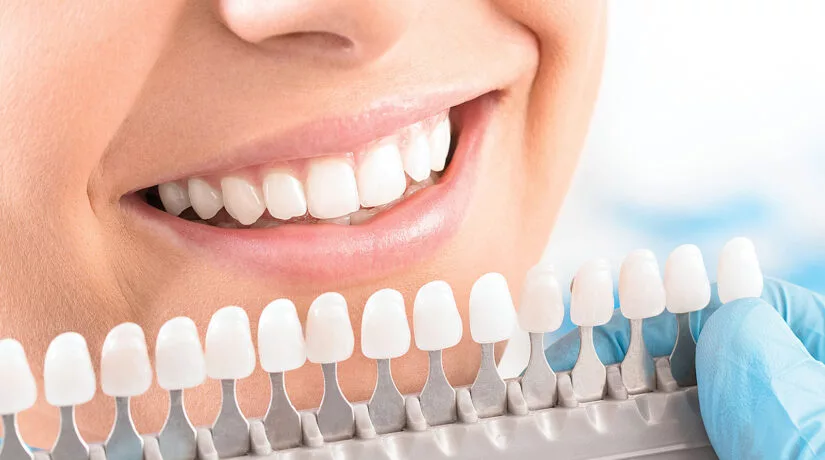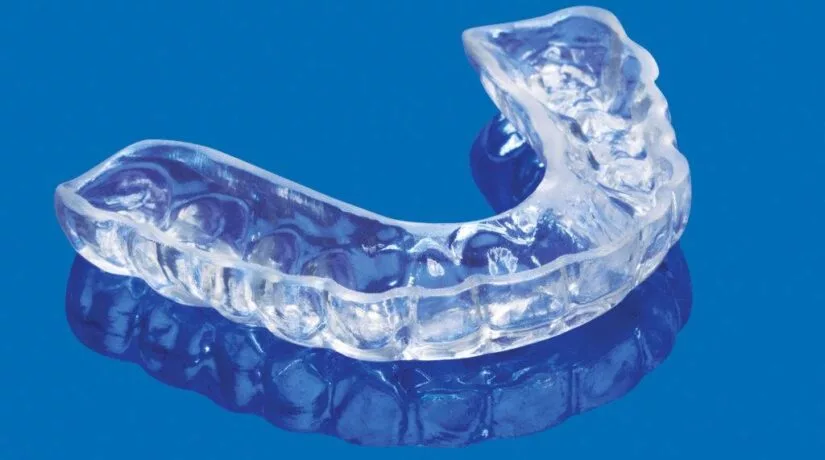![]() Bridle Trails
Family Dentistry - (425) 881-9333
Bridle Trails
Family Dentistry - (425) 881-9333
![]() Spring District
Family Dentistry - (425) 454-4298
Spring District
Family Dentistry - (425) 454-4298
![]() Bridle Trails
Family Dentistry - (425) 881-9333
Bridle Trails
Family Dentistry - (425) 881-9333
![]() Spring District
Family Dentistry - (425) 454-4298
Spring District
Family Dentistry - (425) 454-4298

Fillings are a way to restore a tooth that has been damaged by decay and bring it back to its normal shape and function. When one of our doctors give you a filling, they will first remove all of the decay on the tooth and clean the area, and then they will fill the cleaned out cavity with a filling material. Once we have closed up the area, bacteria will not be able to enter, protecting the tooth from further decay. This doesn’t mean that you can stop brushing and flossing though. Without proper hygiene habits, decay can come back.
What Are Fillings Made Of?
Fillings are made of different types of materials. There are gold fillings, silver fillings (AKA) amalgam, composite resin fillings, and porcelain fillings. Our doctors will recommend the best type of material for your filling.
Metal-free fillings, also known as composite resin fillings, match the color of the tooth and are biocompatible. Traditional black amalgam fillings are typically made of mercury and silver, along with other “junk” metals.
How Do I Know I Need A Filling?
That’s the million-dollar question! You don’t always know when you need one. That is why it’s important to come in and see us twice a year. This will allow us to spot decay before it’s too late. Our biggest concern is your longterm oral health.

When Dental Implants Get Damaged
It doesn’t happen very often, but just like real teeth, dental implants can become damaged even when we’re taking great care of them. It could be the result of the implant not bonding sufficiently to the jaw bone, or the jaw bone itself could be the problem. If your implant becomes cracked, chipped, or feels loose, it’s time to come visit us for repairs. If you live in Kirkland, Bellevue, or Redmond, Washington or the surrounding area, we would like to serve you and welcome you to our family.
How Do Our Doctors Repair Implants?
The way our doctors repair an implant depends on how it is damaged. If the problem is only with the crown, it can usually be repaired or replaced without having to do anything to the implant itself. When the damage is to the implant or post, however, the repair process becomes more complex. First, the implant will be removed, which may require surgery. After a healing period, if the jaw bone is healthy enough, a new implant can be placed.
What To Do If Your Implant Is Damaged
Do not attempt to self-diagnose a problem with your implant or fix it yourself. This is definitely a job for a professional. Attempting to fix it yourself could make things worse, including damaging the underlying jaw bone. If you’ve noticed any problems with your implant, contact us!

A dental implant (also known as an endosseous implant or fixture) is a prosthesis that connects to the jaw or skull bone to support a dental prosthesis such as a crown, bridge, denture, or facial prosthesis or to act as an orthodontic anchor.
Why Our Doctors Would Recommend A Dental Implant
Dental implants are designed to provide a strong foundation for replacement teeth. These new teeth look, feel, and perform just like a regular tooth. Dental implants are changing the way our patients live. A person who has lost a tooth is able to regain the ability to eat with that tooth again. A dental implant appears completely natural and keeps your facial contours intact by preventing the bone deterioration that occurs when teeth are missing. An implant is one of the healthiest ways to replace a missing tooth.
The Anatomy Of A Dental Implant
There are three parts that make up a dental implant.
Come To Us With Your Dental Implant Questions
Dental implants are very cost-effective and, if properly cared for, will last for many, many years. The process of placing a dental implant is simple and straightforward and is a regular treatment.

Restoring The Function Of Your Teeth
What Is A Dental Bridge?
Tooth loss can happen for a variety of reasons, from decay to disease to injury. No matter the cause of tooth loss, it’s important to fill in the gap to restore normal chewing function. One option is a dental bridge. The bridge replaces missing teeth with pontics (fake teeth) and is supported by attaching to the natural teeth or implants on either side of the gap. Bridges can be made from a variety of materials that differ in cost, appearance, and durability.
Why Get A Dental Bridge?
Replacing missing teeth is important for a number of reasons. The longer a tooth is gone, the more the surrounding teeth will shift towards the hole, affecting chewing and speech. The bone where the tooth was will also erode over time. Even the shape of the face is affected by missing teeth! All of this is why many people with missing teeth lose confidence in their smile. A bridge will keep your natural teeth in place and give you a smile you can be confident in.
Who Do Our Doctors Recommend Bridges For?
Different patients have different needs with their new teeth. We recommend bridges for patients with bone loss or significant damage that rules out the possibility of implants. Once the bridge is in place, you will be able to enjoy effortless chewing of all your favorite foods.

What Is The Purpose of Dental Crowns?
A crown is a cap that is placed over a broken tooth. Crowns are used to protect, cover and restore the contours of teeth when fillings don’t do the trick. Metals, porcelain, resin, and ceramics are all options for dental crowns.
What Are Dental Crowns Made From?
Crowns are made from different types of material. Early in dentistry, they were made from metals like stainless steel. We use porcelain crowns. The reason that we recommend porcelain is because of its strength and cosmetic appeal. Porcelain provides a better color match than other materials. It is also better for those who have metal allergies.
How Long Do Dental Crowns Last?
Crowns last between five to fifteen years, depending on your oral health habits and the amount of wear and tear they receive. After we place your dental crown, you’ll want to stay away from chewing ice and other hard materials, grinding your teeth, biting your fingernails, and opening packages with your teeth. This will help your crown last as long as possible.
How We Save Cracked And Broken Teeth
One of the most common procedures is placing a crown. Our doctors will place crowns to help out with many different dental health problems. Some of those include:
Contact us today to schedule a consultation regarding a dental crown.

What Is Enamel Shaping?
Enamel shaping is a process by which our doctors use a sanding disc to carefully remove small amounts of tooth enamel, followed by polishing the area. This process only requires a single visit and is sometimes necessary alongside dental bonding procedures. Enamel shaping can be done to hide imperfections or to change a tooth’s appearance or shape.
When Is Enamel Shaping Done?
There are a few different circumstances that make enamel shaping a great option, such as:
Are You A Candidate For Enamel Shaping?
Not all dental problems can be solved with enamel shaping. More serious cases generally require orthodontic treatment or restorative dentistry to correct, but shaping is a great option for improving the appearance (and in some cases even the function) of teeth with smaller imperfections. If your teeth have uneven edges or minor chipping, enamel shaping could be the perfect solution for you. To learn more, contact us.

A Simple Procedure To Help With Speech And Dental Health
Have You Or Someone You Love Been Tongue-Tied?
You’ve probably heard of the term “tongue-tied.” Did you know that this common expression comes from an actual medical condition that can inhibit speech? The tongue is attached (or tied) to the base of the mouth by a thin tissue web called the lingual frenum. For some people, the frenum is unusually thick or tight, restricting tongue movement and, therefore, speech. It can also negatively affect nursing in infants.
A tongue-tie can lead to:
Feeding difficulties and dental development (especially in children).
Speech difficulties, especially for sounds that require tongue elevation, such as: s, z, t, d, l, r.
Saliva management during speech and or eating.
Frenum scraping against the lower central incisors, and at times becoming pinched.
The inability to sweep the lips, which is common while eating an ice cream cone or in licking your lips.
In an attempt to compensate for the lack of tongue movement, some children demonstrate an increase in lateral or forward mandibular movement.
A Frenectomy Remedies Tongue-Tie
When someone is tongue-tied, our doctors may recommend cutting back the frenum a little bit. This is called a lingual frenectomy. It’s a common and simple procedure that can be done right here in our practice. Whether you’re an adult who wants to untie your tongue or a lingual frenectomy has been recommended for your child, we would like to give you an idea of what to expect from this procedure. It may sound intimidating, but it’s actually very simple. The frenum doesn’t have nerves or muscle; it’s simply a connective tissue like an earlobe. The procedure usually takes under 10 minutes, and most patients feel fully recovered within the hour.
Put Your Tongue-Tied Days Behind You
Our doctors would like you to know a lingual frenectomy is nothing to be nervous about. If you think a lingual frenectomy may help you or a family member, let us know!

What Is Occlusal Disease?
Occlusal disease is when a patient’s bite is not properly aligned. Because of the poor alignment, every time the patient bites down, the pressure begins to create problems with the teeth, muscles, jaw bone, and jaw joint. Occlusal disease is one of the most common dental disorders, while at the same time one of the most undiagnosed dental disorders.
Symptoms of occlusal disease are varied. Where the upper and lower teeth meet, it’s common to find the enamel completely worn down. Once this happens, the teeth begin to show visible wear quickly. It’s not uncommon for teeth to look very worn.
With occlusal disease, teeth can also become loose and move much easier, often becoming sensitive to temperature changes and sore from biting. They can even fracture easier. Beyond the structural damage to a person’s teeth is the damage done to their jaw and joints. The jaw muscles can become sore and painful, and headaches are a common complaint. Our doctors have also found that patients with occlusal disease have jaw joints that pop and click while eating. Not only is this annoying, it can be painful.
When Occlusal Disease Goes Untreated
Without treatment, the teeth will continue to wear down and become worse over time, sometimes leading to tooth loss. The jaw muscles and joints will continue to cause discomfort as well. The longer occlusal disease goes untreated, the more complex the treatment will need to be, which is why it’s better to begin treatment for occlusal disease as early as possible.
How We Will Treat Occlusal Disease
Once diagnosed, our doctors can prescribe treatment. Depending on your case, it could involve simple orthodontic treatments, mild reshaping of the teeth, restorations of worn teeth, or a combination of several treatments. The earlier we diagnose, the less complex the treatment.
The key to preventing damage from occlusal disease is examination and diagnosis. If you are suffering from any of the symptoms mentioned, please let us know so we can take a closer look. Early intervention will help us to prevent more costly problems.